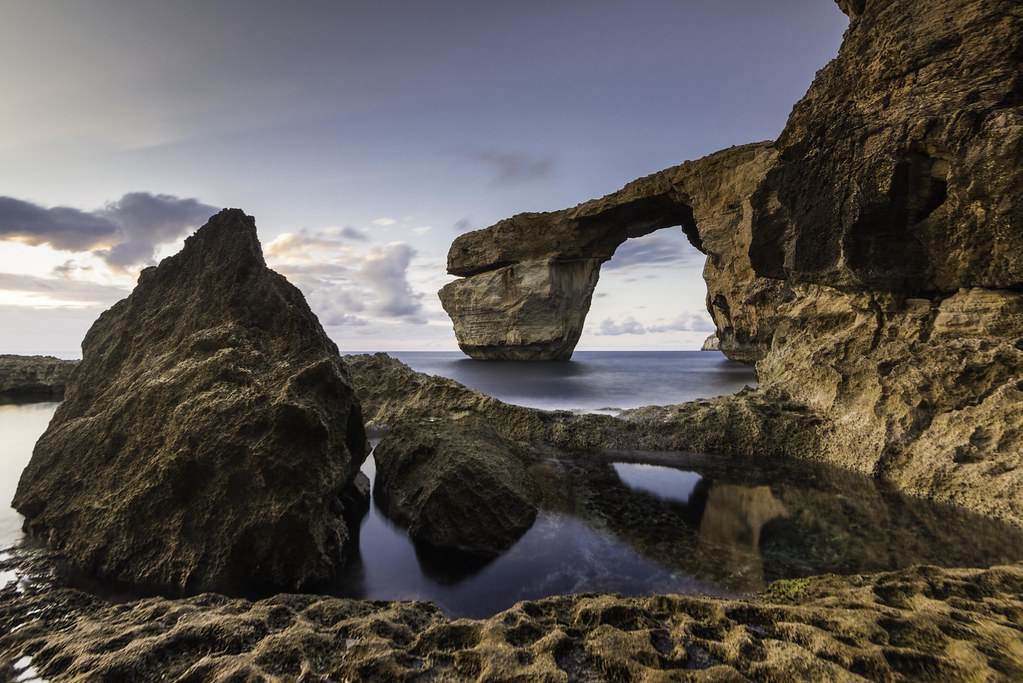
Imagine if, one day, the Niagara Falls dried up, the Great Pyramid sank below the sands of time or the Acropolis of Athens came down. That’s pretty much how it felt to the Maltese people, and pretty much the whole world, when on 8 March 2017, the Azure Window - the great Maltese icon - came crashing down into the sea.
A lost Maltese icon

A great loss for a nation
Although we could witness it slowly falling apart, we never imagined we would live to see it gone altogether.
2011

2016

The whole country was in mourning. Social media was flooded with expressions of shock, sadness and regret. Next thing you know, eBay was flooded with bits of the Azure Window for sale for ridiculous prices. But it was not just the locals that took this news to heart (even the Prime Minister calling it “heartbreaking"). The news of its demise was reported on BBC News, the Telegraph, the Washington Post, ABC.net.au, Global News, The Wall Street Journal and many other news rooms around the world.
A famous landmark

Indeed, the Azure Window was a well-known Maltese icon on the island of Gozo. The Azure Window had even found itself on screen in several productions, including Clash of the Titans (1981), the Odyssey (1997), the Count of Monte Cristo (2002) and, most recently, the Dothraki wedding scene in the first season of Game of Thrones.

The erosion of the Azure Window is especially evident when comparing the shots, thirty years apart, from Clash of the Titans in 1981 to Game of Thrones in 2011.
Ravaged by a storm
The very north-westerly rage of wind and wave action that formed the Azure Window finally reclaimed it. Starting with a fissure in the rock that opened up into a cave, which collapsed probably around the early 19th century, the window continued to erode into a beautiful natural arch. Alas, the pillar became significantly weakened until it was unable to hold up to the beating of a gale-force storm. While most arches collapse leaving a stack similar to the Fungus Rock, the pillar of the Azure Window came down first, taking the whole thing with it.
The Azure Window dive site - a new life underwater

Joseph Caruana
The area of Dwejra has long been a famous dive site with several important features. While divers confirm that the south-facing part of the pillar collapsed and the north-facing part of the pillar still stands up to five metres below sea level, the rubble lies at a depth of 52m. The huge slabs of rock - the collapsed Azure Window - are a new hot diving attraction in Dwejra, alongside the famous Blue Hole and Inland Sea Tunnel. Its future will see it evolving into a natural reef.
A replacement of the Azure Window?

Above the waves, one must admit the sight of the Azure Window as part of the Dwejra geomorphology is sorely missed. But could some of the bizarre proposals to rebuild it in steel as a museum actually come to fruit? One thing is sure: two years later and the Azure Window is still making international news.
The 'other window' at Wied il-Mielah

Strangely, the window at Wied il-Mielah, which is just as impressive, never quite became as famous. The Azure Window, located by Dwejra’s many attractions, such as the Inland Sea and Fungus Rock, received so much attention it stole all the limelight.
Wied il-Mielah is shorter on attractions, but the road leading down the valley is nonetheless beautiful and the window is nothing short of impressive, especially when you can come up to it so close and personal. Isn’t it, perhaps, about time we stopped mourning for loss with desperate attempts to revive the past and celebrate what is still within reach, in the present? The beautiful Wied il-Mielah window certainly deserves some time in the spotlight.